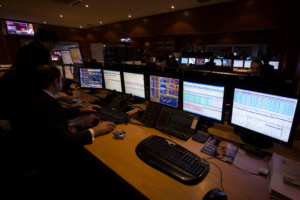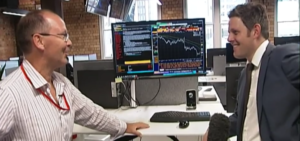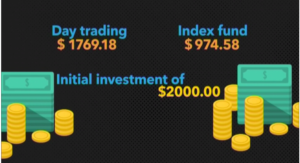Trading platform insight and four week televised experiment: $2000 lost or profit gained?
In a four week experiment, television presenter Julian Lee set out to master the OTC day trading markets. His result was remarkable. We take a look at his findings, which represent approximately those ofmany a novice trader

This week, New Zealand’s mainstream television show, Story, which is a TV3 current affairs show hosted by Duncan Garner and Heather du Plessis-Allan, featured a documentary about retail FX trading, although unlike many mainstream armchair pundits who simply put their own perspective forward, Story actually conducted a full and detailed test in their own right.
Over the past four weeks, the New Zealanders set up their own ‘get rich quick’ style retail trading scheme to see if ordinary members of the public were able to make a profit, or if they need to be an expert and understand the full technicalities, functionality and analysis that take several years to master by even the most mathematically able of minds.
The idea was to invest an initial sum of just $2,000 (NZD), and enter the world of leveraged margin trading, which, according to the operators, is much more risky than regular trading but can be more rewarding.

Indeed, retail OTC FX rose to prominence largely because of the low entry barriers to ordinary investors, as the average deposit sizes are approximately $3,800 (US), however because of the leverage available, the purchasing ability in a live market place is high, compared with $50,000 for a HFT or exchange traded futures account with no or very low leverage.
Julian Lee, who was tasked with attempting to master the FX market, noted that many retail trading platforms which are available to a retail audience range from completely free of charge to highly expensive, however the live market at the end differs according to each firm’s ethos, execution methodology, connectivity, available range of asset classes, and indeed risk management strategy.
“It did not start well” said Mr. Lee, “however by last week, with the deadline fast approaching, it was just starting to edge ahead, but wait till you see what happened in this final week!”
Rather kitsch and unnecessary imagary of a Lincoln Town Car limousine, single malt whiskey, a cigar and an ill-fitting suit were perhaps a distasteful method by which to initiate Story’s documentary, as, unlike the established trading firms of London and New York, whose senior executives are extremely astute and understand the entire components comprising every aspect of trading – as do many of their clients, the imagery portrayed in this particular case was somewhat tasteless and demonstrated a lack of understanding by the producers of the professional nature of today’s bona fide retail FX industry.
Less ‘yea mate’ and more dignity would be appropriate.
Whilst toting the full regalia of a less than salubrious used car dealer, Mr. Lee began to reflect on what successful trading would mean to somebody who can master it, select the right platform, understand the markets properly and avoid having to live “paycheck to paycheck” in a regular job.
“How do they do it?” he pondered.

Mr. Lee then began his insight into trading, by initially taking a safe trade on the NIX fund with $1000 dollars, and then with the other $1000 he took some more risky positions.
Day trading was the focus for the remaining $1000 of the available funds, which is indeed the type of trading that attracts a retail audience to OTC spot FX and CFD companies, rather than the high-deposit long-term position trading that exists on the exchanges of Chicago.
During the first week of day trading, Mr. Lee made some losses, and struggled as much to come to terms with the industry jargon among traders which differs as much from the industry jargon used among programmers and developers of platforms (the market itself and the providers of platforms being two completely separate and enormous sectors), as I, someone blessed with a reasonably comprehensive command of the English language, struggled to understand Mr. Lee’s colloquial and informal slang-infested method of delivery.
Two weeks into the experiment, Mr. Lee changed his strategy. “I have finally got access to the big boys toys” he enthused. “I started using a trading platform called cTrader” he continued.
cTrader, developed by Spotware Systems in Limassol, Cyprus, is an API-based system that has algorithmic capabilities and a series of trading applications that can be downloaded and run as native systems.
FinanceFeeds today spoke to James Glyde, Business Development Manager at Spotware Systems, who today explained “cTrader executes traders orders faster than any other retail platform on the market thanks to our proprietary technology and sophisticated global infrastructure which makes it the best choice for ECN, STP traders.”
“The platform is ergonomic and user friendly allowing traders to react quickly to what they see on their monitors. It’s easy on they eyes and that’s a concept underappreciated by other developers, it’s important when spending all day every day looking at an application” concluded Mr. Glyde.
After a month of trading, Mr. Lee’s balance rose from an initial $1000 to $1769, By contrast, the investment on the NIX, being a safe investment, made a $25 loss.
Whilst the downside of this particular insight is that no strategies were explained, and it was not demonstrated as to how Mr. Lee achieved his profit, the interesting point here is that a media entity which does not specialize in this industry managed to concur that OTC day trading is indeed a highly accessible method of gaining profit, if conducted via the right brokerage and platform, compared to expensive, slow and low-leverage indices or futures.
Interesting indeed!









